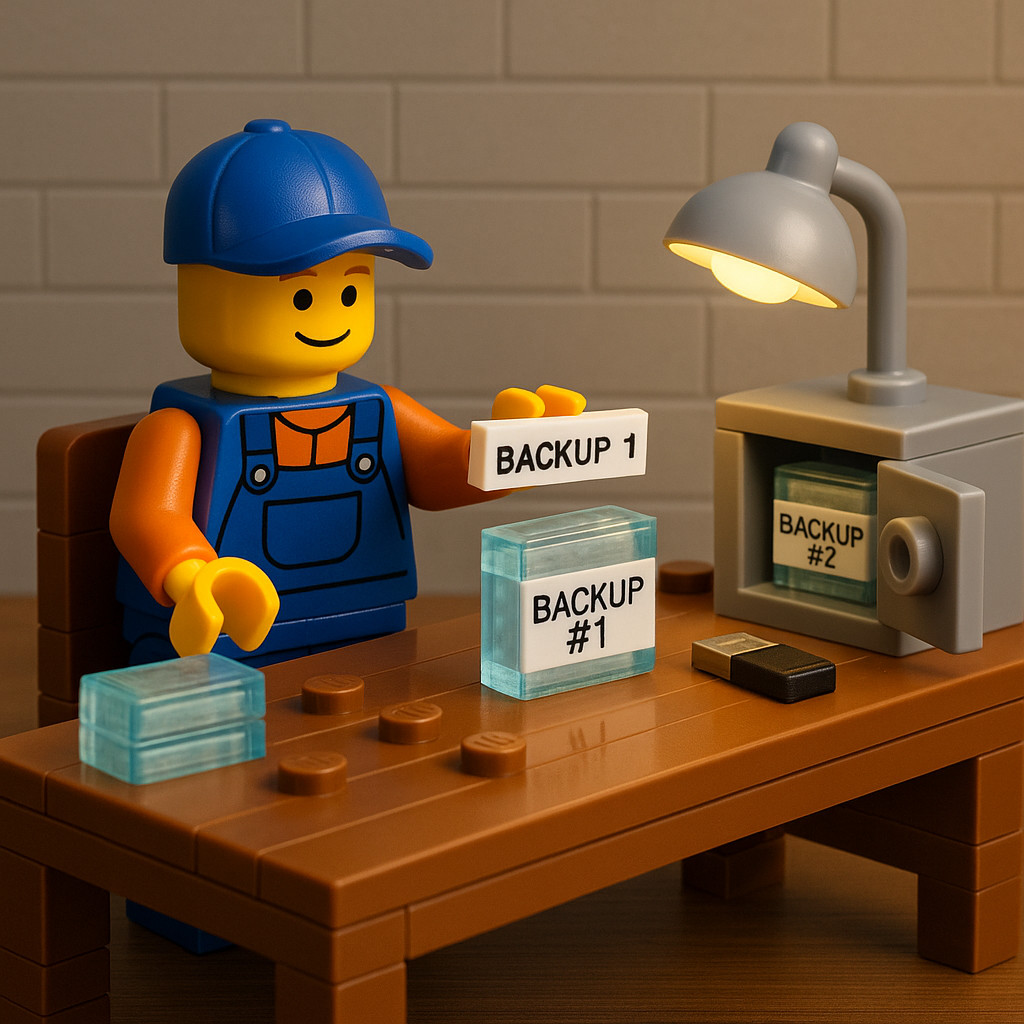Simple Data Backups Without the Cloud

Table of Contents
Simple Data Backups Without the Cloud#
By Switchboard Tech Services – Kirksville, Missouri
Most people do not think about backups until it is too late. A hard drive fails, a laptop gets dropped, or a ransomware pop-up locks the screen, and suddenly years of work or photos are gone.
The good news: you can protect everything that matters with one or two small devices and about 15 minutes of setup. No cloud subscriptions, no login screens, and no data mining involved.
This guide covers the simplest, most reliable ways to back up your files completely offline.
1. Why avoid the cloud?#
Cloud storage is convenient, but it also means your data lives on someone else’s computer. You depend on their password system, their pricing, and their ability to stay honest and secure.
There is nothing wrong with using Google Drive or OneDrive for quick sharing, but they should not be your only backup. If an account is hacked or closed, you can lose everything overnight.
Local backups give you full control. You own the drives. You decide when they connect. You can literally hold your data in your hands.
2. The golden rule: two copies minimum#
A backup only counts if it exists in more than one place. That means:
- One copy on your computer (your working files)
- One copy on a separate drive or medium
If you have important documents or irreplaceable photos, add a third copy stored somewhere else, like a safe or a trusted family member’s house. This protects you from fire, flood, or theft.
3. Choose your backup device#
You have three main options, depending on how much data you need to save.
USB flash drives:
- Great for small sets of documents and photos
- Compact, cheap, and easy to use
- Limited lifespan (eventually wear out)
External hard drives (HDD):
- High capacity for a low price
- Ideal for full system backups
- Slower and slightly fragile (don’t drop them)
Solid State Drives (SSD):
- Fast and durable
- Great for frequent backups
- Cost a bit more but last longer
At Switchboard Tech Services, we usually recommend an SSD for laptops and a standard HDD for desktop backups.
4. Organize your backup folder#
The best backups are simple. Create one main folder on your drive called Backup and inside it, use clear subfolders like:
/Backup/Documents
/Backup/Photos
/Backup/Projects
/Backup/Finances
Keep names short and obvious. Avoid long nested folders or strange characters. A tidy structure makes it easier to find files years later.
5. How to do a manual backup#
This method works on any computer, no special software needed.
On Windows:#
- Plug in your USB or external drive.
- Open File Explorer and drag your folders (Documents, Pictures, Desktop) onto the drive.
- Wait until the copy finishes, then safely eject the drive.
On Linux:#
- Mount your external drive (it usually appears on the desktop automatically).
- Open your file manager or terminal.
- Copy using drag-and-drop or run a simple command like:
rsync -avh ~/Documents /media/username/BackupDrive/ - Unmount the drive when done.
You can schedule this weekly or monthly depending on how often you update your files.
6. Automating the process#
If you forget to back up, automation helps. Use free tools like:
- FreeFileSync (Windows/Linux/Mac) for mirror-style backups
- Timeshift (Linux) for full system snapshots
- rsync scripts for advanced users
These tools can compare folders and only copy new or changed files, saving time and wear on the drive.
7. Test your backups#
A backup you have never tested might as well not exist. Every few months:
- Plug in your drive
- Open a few files
- Make sure they open correctly and are up to date
If something fails to open, fix it now – not after a crash.
8. Store your drives wisely#
Keep backup drives in a cool, dry place away from magnets, heat, and sunlight.
If you make a second copy for off-site storage, label it clearly and seal it in an anti-static bag or a small lockbox.
For sensitive data, consider encrypting your backup drive with VeraCrypt or the built-in disk encryption on your operating system.
9. A local habit worth forming#
In a small town like Kirksville, the internet is not always reliable, and outages happen. Having your data safely stored on a local device means you can work through anything – even offline.
Backups are one of the simplest forms of digital self-reliance. Once you get in the habit, it feels strange not to have one.
Need help setting up backups?
Switchboard Tech Services in Kirksville can set up an automated local backup system for your computer, external drive, or home network.
Read more local tech guides in The Kirksville Tech Handbook.